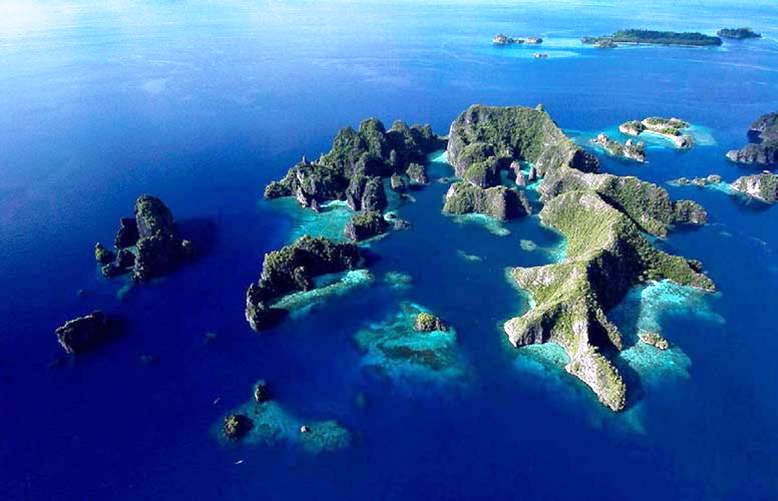The roaring engines fixed to a large wooden boat are finally quiet. Nothing can be heard but the rifting little waves, lapping against the vibrant paint on the sides of the vessel that gracefully slows down. Native birds hop on the tip of a small tree in one of the deserted islands in the distance.

Raja Ampat or ‘Four Kings’, is the name given to these islands and comes from a local myth. The four major islands found here are Waigeo, Misool (which is home to ancient rock paintings), Salawati, and Batanta.
Underwater enthusiasts flock to this region because it offers the world’s best marine sights. Two days earlier, some of these travelers had been at a deafening corner of a tourist trap in Bali. Once they took their flight to the bird head of the island of Papua everything changed as they embarked on a diving tour of a lifetime. In the Raja Ampat islands, divers can explore vertical underwater walls. The thrill of drift diving is another great challenge. These are the awesome experiences you will find in Raja Ampat.
Meanwhile, on this tour several divers were well equipped and looked advanced. The territory within the islands of the Four Kings is enormous, covering 9.8 million acres of land and sea, home to 540 types of corals, more than 1,000 types of coral fish and 700 types of mollusks. This makes it the most diverse living library for world’s coral reef and underwater biota. According to a report developed by The Nature Conservancy and Conservation International, around 75% of the world’s species live here. When divers first arrive here their excitement is palpable. It’s common to hear people praise God as they take in the remarkable scenery. Others prefer to remain in silence taking in the overwhelming sight of so many islands with crystal clear water that softly brushes over the white sandy beaches.
“Disini bagus!”, says the friendly local guide who had been appointed by the tour operator who runs an eco-lodge in Raja Ampat, indicating that they have arrived at one of the most fantastic diving sites. On other days, this guide is just a simple fisherman. The local fishermen here are accustomed to foreigners and are friendly, especially when offered pinang (betel nuts) or some sweet candies. These are very popular and offering these sweets is considered polite and a good way to win an instant smile. The fishermen usually eat this snack during Para-para Pinang, or social chatting and exchanging funny stories while chewing Pinang. In many respects, like nature, culture, and history, these fishermen are closer to the Moluccas.
“No doubt about it, Raja Ampat is definitely the richest place for fish that I have ever been.” -
-Dr G.R. Allen
“I was like a five-year-old, seeing a reef for the very first time. I was awestruck, held by the incredible power of this richest reef. We must, with all available resources, preserve the beauty of Raja Ampat. This may be the last frontier.” –Michael Aw
“I love the people, I love the diving, it’s super! I’ve never been for a second time to the same dive destination but now I’m thinking about going back for the third time! Should I say more?” –Peter van Dalen
(These testimonials are taken from www.iriandive.com)
While the landscape may look like a dream, this is not an illusion. As you embark on your dive, the phrase ‘Attention to detail’ takes on new meaning as pigmy seahorses swim around your fingers. Manta Rays and wobbegongs will glide right by you. Tuna fish, giant trevallies, snappers, and even barracudas are there to complete your underwater ‘meeting list’. Not to mention the friendly assistant of the dugong, and a busy colleague, the turtle. Natural and untouched beauty is the main attraction here. With no unnecessary adages, the sky, the lush islands, the sea, and everything above and under it is genuinely saying ‘Welcome to Raja Ampat Islands; your personal Disneyland of diving sites’.
More facts about the Raja Ampat Conservation Area:*
This area is home to 1,511 species of reef fish in the Bird’s Head Seascape;
1,320 species of reef fish in Raja Ampat;
75% of all known coral species in the world;
10 times the number of hard coral species found in the entire Caribbean;
In the Birds Head Seascape there 600 species of hard coral recorded;
5 species of endangered sea turtles;
57 species of Mantis Shrimp;
13 species of Marine Mammals;
And 27 species of endemic reef fish found only in that area
sources : www.daydaily.com

No comments:
Post a Comment